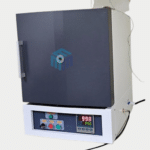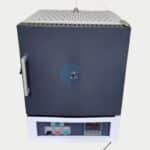Heating elements that include molybdenum disilicide (MoSi2) are commonly utilized in industrial furnaces that operate at high temperatures, and they offer distinct benefits and uses. The main uses and benefits of molybdenum disilicide heating components in furnaces are as follows:
Uses:
- High-Temperature Furnaces: MoSi2 heating elements are widely employed in high-temperature industrial furnaces, which may reach temperatures of 1,200°C to 1,800°C (2,192°F to 3,272°F). These furnaces are used for heat treatment, sintering, annealing, and ceramic firing.
- Heat Treatment of Metals: Steel and alloys are among the metals that can be heat treated to enhance their mechanical qualities, such as strength and hardness, using these heating elements.
- Manufacturing of Ceramics and Glass: MoSi2 heating elements are used in the manufacturing of ceramics and glass to provide accurate and consistent heating throughout the firing and annealing processes.
- Manufacturing of Ceramics and Glass: MoSi2 heating elements are used in the manufacturing of ceramics and glass to provide accurate and consistent heating throughout the firing and annealing processes.
- Semiconductor Processing: MoSi2 heating elements are utilized in semiconductor production for high-temperature procedures such as silicon wafer oxidation, annealing, and diffusion.
- Research and Laboratory Furnaces: They are used in research and laboratory furnaces for testing materials and conducting experiments that call for exact and high-temperature control.
Advantages:
- High-Temperature Capability: Silicon carbide heating elements are appropriate for applications that need to heat materials to extremely high temperatures since they can tolerate extreme temperatures.
- Quick Heating and Cooling: Because of their superior thermal conductivity, they can be heated and cooled quickly, which can increase process efficiency.
- Long Service Life: The long operating lifespan of SiC heating elements minimizes the need for frequent replacements and the resulting downtime.
- Even and Consistent Heat Distribution: By distributing heat evenly, these heating components guarantee that materials are heated throughout and avoid hot spots inside the furnace.
- Chemical Resistance: SiC heating elements can withstand a wide range of corrosive gases and chemicals, which makes them appropriate for use in harsh processes.
- Low Maintenance: They require less upkeep, which lowers running expenses and idle time.
- High Power Density: SiC heating elements can provide substantial power output in a confined area, ideal for applications with restricted furnace dimensions.
- Low Thermal Expansion: Silicon carbide exhibits minimal thermal expansion, alleviating strain on the heating element and prolonging its lifespan.
In conclusion, silicon carbide heating elements are indispensable components in high-temperature industrial and laboratory furnaces. Their outstanding temperature resistance, durability, even heating distribution, and chemical resilience render them suitable for diverse applications across multiple industries.
M-Kube Enterprise is an Indian company catering customized laboratory products, laboratory consumables, and laboratory solutions in India, Australia, the USA, New Zealand, Singapore, Malaysia, South Korea, Dubai, the Philippines, Indonesia, and Vietnam.






